This is the second installment in our Lighting Series, exploring how thoughtful lighting can transform your space and well-being.
Man Ray, Électricité la Maison (1931)
A no-nonsense guide to better light, room by room.
Let's talk about light bulbs. They might seem like a tiny detail, but the right bulb can completely transform your space. Pick the wrong one, and suddenly your living room feels like a hospital waiting room. So, how do you choose wisely?
Last year, we launched a limited-edition collaboration with artist and creative director Xavier Donnelly. As someone who appreciates and designs iconic spaces, he thinks about how lights shape a room almost as much as we do.
"Overhead lighting can be tricky if it's too bright. You really don't want that kind of light casting towards people in a space. It can cause harsh shadows and be unflattering. You generally want your direct lighting to come from eye level."
— Xavier Donnelly, artist and creative director
The Temperature Spectrum: What You Need to Know
When lighting designers talk about "temperature," they're not discussing heat, they're talking about the color quality of your light, measured in Kelvin. Think of it as the difference between candlelight and hospital fluorescents. Our take? Most homes feel better in warm to neutral ranges. When in doubt, always use a 2700K. Our favorite bulb can be found on Amazon.
-
Warm white (2700K–3000K): Creates that golden-hour glow that makes everyone look their best. Perfect for living spaces, bedrooms, or anywhere you want to feel instantly at ease.
-
Neutral white (3500K–4100K): The diplomatic middle ground. Bright enough for detailed tasks without feeling clinical. Ideal for kitchens and workspaces.
-
Cool white (5000K+): Mimics midday sunlight, energizing but potentially harsh. Reserve this for utility spaces or areas where you need to see absolute detail.
"Floor lamps and table lamps are super helpful because, again, they create that soft, eye-level light. But I think the more important thing is to switch out all your light bulbs. Make sure you have very warm (at least 2700 Kelvin) light bulbs in all of your light fixtures."
— Xavier Donnelly, artist and creative director
On Brightness
Here's what you actually need to know:
For reference:
-
450 lumens creates intimate lamp lighting
-
800 lumens works for everyday room illumination
-
1600+ lumens is ideal for large spaces or task-specific lighting
Remember: Tulip shades are designed to diffuse light, so even higher-lumen bulbs become gentle and flattering rather than harsh and glaring.
A Room-by-Room Guide
-
Bedroom – Use warm light (2700K) at ~450–800 lumens. Your brain will thank you at bedtime.
-
Nursery – Keep it soft, warm, and ideally dimmable. The gentler the better for developing eyes.
-
Kitchen – Aim for neutral tones (3500K) with higher lumens concentrated over prep areas.
-
Bathroom – Match natural daylight (4000K) near mirrors for accurate makeup application, but soften overhead fixtures to prevent unflattering shadows.
-
Living Room – Layer multiple warm light sources rather than relying on a single overhead beam. This creates depth and allows for different moods.
Pairing with a Tulip Shade
Tulip Shades were designed to work with all bulb types but some combos shine brighter than others, transforming even the most direct, harsh downlight into something soft and welcoming. The diffusion creates a gentle wash of light that eliminates those harsh shadows Xavier mentioned. For ultimate control, pair your Tulip shade with dimmable LEDs.
"I had no idea choosing a different bulb would make such a difference in the baby's room. With the Tulip shade on, it's now the softest space in the house."
– Jordan K., Tulip Customer
The Right Light is the One That Works for You
While this guide gives you technical starting points, the best measure of good lighting is how it makes you feel. If your space feels right, (calm, welcoming, and easy on the eyes) you've found your perfect light.
Next Up: Volume III: Seasonal light shifts, and how to set the mood for summer.


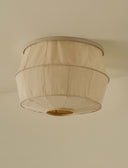
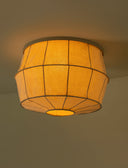
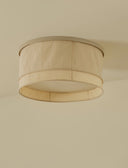
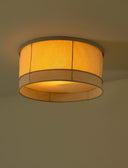
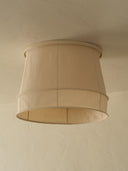

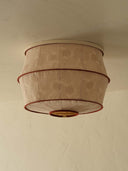
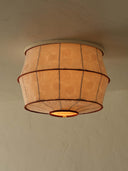
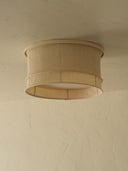
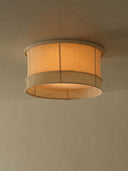
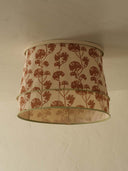
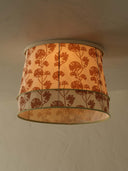
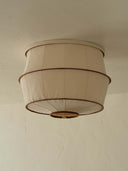
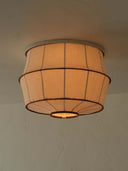
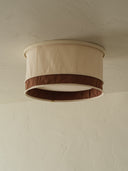
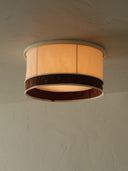
Lighting Series Vol.2: How to Choose the Right Bulb for Every Room
This is the second installment in our Lighting Series, exploring how thoughtful lighting can transform your space and well-being.
Man Ray, Électricité la Maison (1931)
A no-nonsense guide to better light, room by room.
Let's talk about light bulbs. They might seem like a tiny detail, but the right bulb can completely transform your space. Pick the wrong one, and suddenly your living room feels like a hospital waiting room. So, how do you choose wisely?
Last year, we launched a limited-edition collaboration with artist and creative director Xavier Donnelly. As someone who appreciates and designs iconic spaces, he thinks about how lights shape a room almost as much as we do.
The Temperature Spectrum: What You Need to Know
When lighting designers talk about "temperature," they're not discussing heat, they're talking about the color quality of your light, measured in Kelvin. Think of it as the difference between candlelight and hospital fluorescents. Our take? Most homes feel better in warm to neutral ranges. When in doubt, always use a 2700K. Our favorite bulb can be found on Amazon.
Warm white (2700K–3000K): Creates that golden-hour glow that makes everyone look their best. Perfect for living spaces, bedrooms, or anywhere you want to feel instantly at ease.
Neutral white (3500K–4100K): The diplomatic middle ground. Bright enough for detailed tasks without feeling clinical. Ideal for kitchens and workspaces.
Cool white (5000K+): Mimics midday sunlight, energizing but potentially harsh. Reserve this for utility spaces or areas where you need to see absolute detail.
On Brightness
Here's what you actually need to know:
Lumens measure brightness (what matters to your eyes)
Watts measure energy consumption (what matters to your utility bill)
For reference:
450 lumens creates intimate lamp lighting
800 lumens works for everyday room illumination
1600+ lumens is ideal for large spaces or task-specific lighting
Remember: Tulip shades are designed to diffuse light, so even higher-lumen bulbs become gentle and flattering rather than harsh and glaring.
A Room-by-Room Guide
Bedroom – Use warm light (2700K) at ~450–800 lumens. Your brain will thank you at bedtime.
Nursery – Keep it soft, warm, and ideally dimmable. The gentler the better for developing eyes.
Kitchen – Aim for neutral tones (3500K) with higher lumens concentrated over prep areas.
Bathroom – Match natural daylight (4000K) near mirrors for accurate makeup application, but soften overhead fixtures to prevent unflattering shadows.
Living Room – Layer multiple warm light sources rather than relying on a single overhead beam. This creates depth and allows for different moods.
Pairing with a Tulip Shade
Tulip Shades were designed to work with all bulb types but some combos shine brighter than others, transforming even the most direct, harsh downlight into something soft and welcoming. The diffusion creates a gentle wash of light that eliminates those harsh shadows Xavier mentioned. For ultimate control, pair your Tulip shade with dimmable LEDs.
The Right Light is the One That Works for You
While this guide gives you technical starting points, the best measure of good lighting is how it makes you feel. If your space feels right, (calm, welcoming, and easy on the eyes) you've found your perfect light.
Next Up: Volume III: Seasonal light shifts, and how to set the mood for summer.